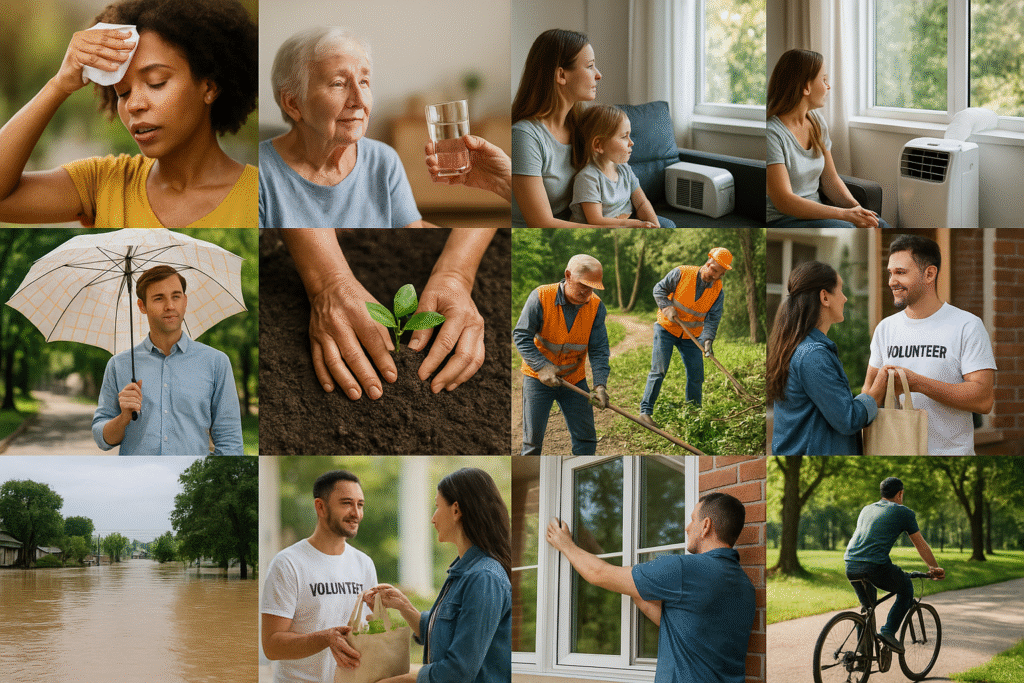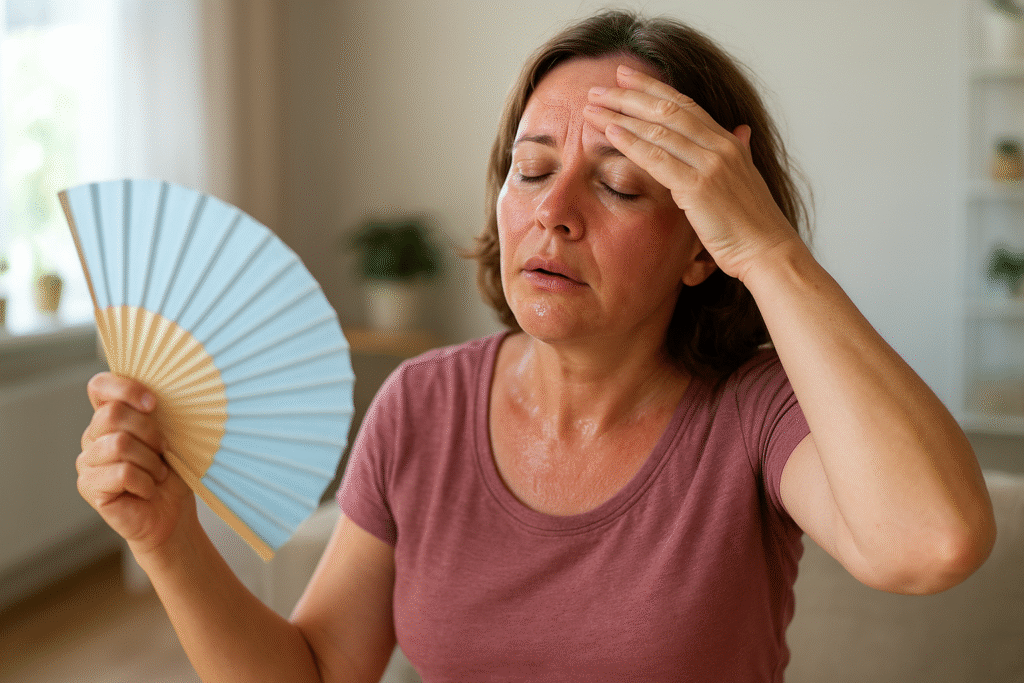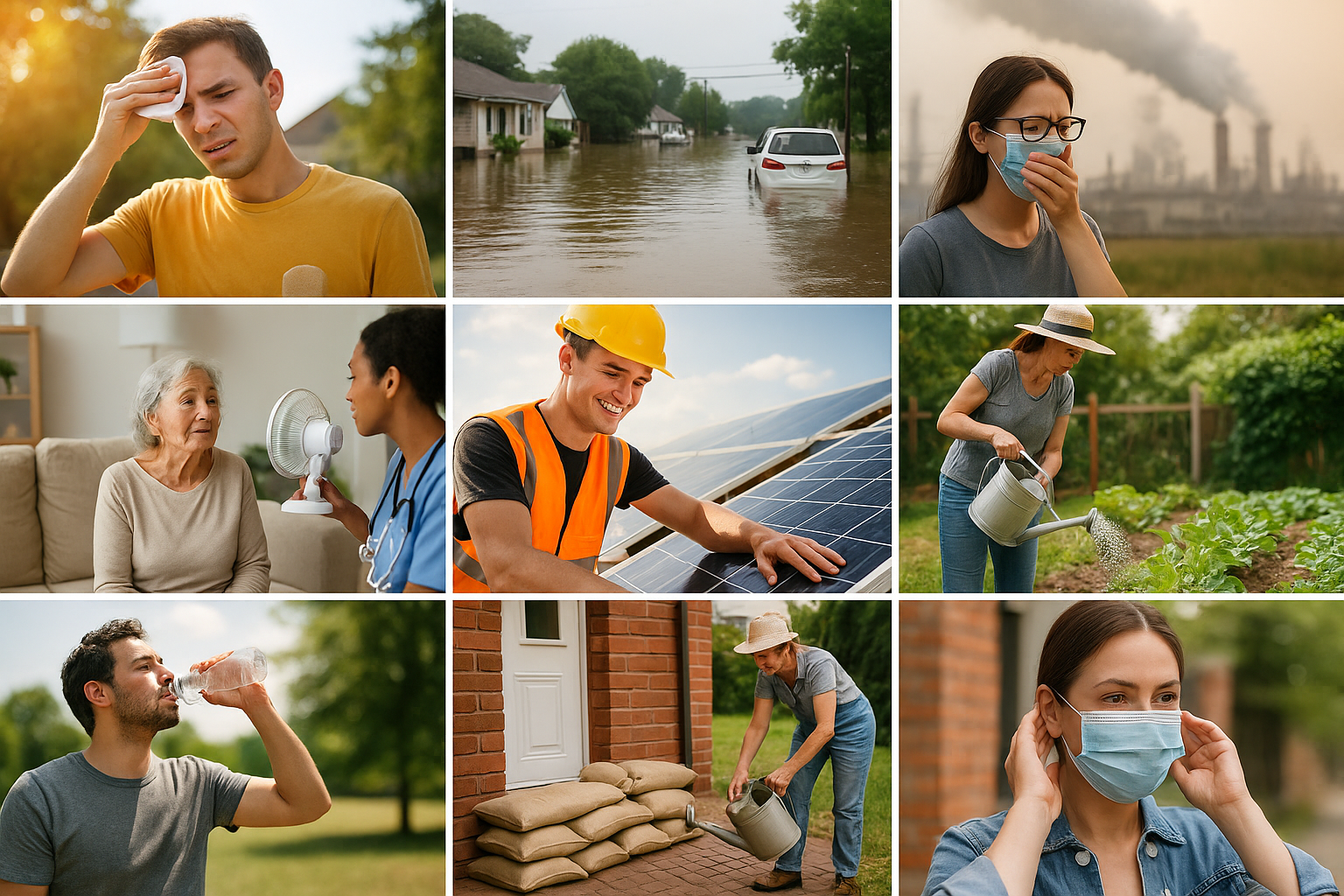Climate-driven extremes — heatwaves, floods and air-pollution spikes — are no longer rare headlines. They happen every year, and they affect our health, homes and local services. This evidence-based, friendly guide from TrenBuzz explains how extreme weather links to illness spikes, who’s most at risk, and — crucially — 12 realistic, low-cost actions you, your family and your neighborhood can use to stay safer and healthier when the next event hits.
Primary keyword: Coping with Heatwaves, Floods, and Pollution Peaks — you’ll see it naturally woven through the post. This article draws on the latest public-health and climate reports and points to government resources for practical follow-up.
Quick snapshot — why this matters now
- Heat stress is the leading cause of weather-related deaths worldwide and worsens many chronic diseases. (World Health Organization)
- For example, England’s 2024 summer heat episodes were associated with an estimated 1,311 heat-associated deaths. (GOV.UK)
- Air pollution remains a huge health burden: recent analyses estimate over 8 million deaths globally linked to air pollution exposures in 2021. (stateofglobalair.org)
- Floods not only cause injury and displacement, they raise the risk of waterborne and vector-borne disease outbreaks in affected communities. (PubMed Central)
Those facts show the scale of the problem — and why practical household and community resilience measures matter.
How extreme events cause immediate and secondary health problems
Heatwaves
- Direct effects: heat exhaustion, heatstroke (a medical emergency), dehydration and worsening of heart, lung and kidney diseases. Older adults, small children, people on certain medications and those without cool spaces are most vulnerable. (World Health Organization)
- Indirect effects: increased ambulance call-outs, overwhelmed hospitals, medication breakdowns (e.g., insulin storage), and higher air pollution (ozone & wildfire smoke) that compounds respiratory risks.
Floods
- Direct effects: drowning, injuries and hypothermia during events.
- Secondary risks: contaminated water, disrupted sanitation, mold growth in homes, increased rodent/vector exposure and outbreaks of diarrhoeal or leptospirosis-type infections in some settings. Displacement and stress also cause mental-health impacts. (PubMed Central, GOV.UK)
Pollution peaks (smog, wildfire smoke)
- Short-term: chest tightness, asthma attacks, increased emergency visits for heart attacks and strokes on high-pollution days.
- Long-term: chronic exposure raises risk of cardiovascular disease, lung disease and some cancers. Vulnerable groups include children, pregnant people, the elderly and those with pre-existing cardio-respiratory conditions. (World Health Organization, stateofglobalair.org)
Who’s most at risk — a short list
- People aged 65+ and very young children
- People with heart disease, lung disease (asthma/COPD), diabetes or kidney disease
- Outdoor workers, homeless people and socially isolated individuals
- Pregnant people (pollution and heat can affect pregnancy outcomes)
- Low-income households in poorly insulated homes with no cooling options
Recognising risk helps prioritise protections at home and in the community.

12 practical steps for coping with heatwaves, floods and pollution peaks
The actions below are split into household, community and planning measures — each is low-cost and evidence-based.
Household & personal actions
- Make a “Heat & Air” plan for your home
- Pre-identify a cool room (basement or shaded room) and know local cooling shelters. During heatwaves, close blinds on sun-facing windows, run fans (but switch to cooler hours for window opening) and hydrate regularly. If you use a fan in very high temperatures, monitor for heat distress — fans can be less effective above ~35°C for some people. (World Health Organization)
- Create a flood-ready kit and safe-reentry checklist
- Include: bottled water (or purification tablets), a battery radio, torch, first-aid kit, copies of documents, rubber gloves, N95 masks (for cleanup dust), and photos of your home for insurance. After flooding, follow government clean-up advice: avoid floodwater contact, ventilate and dry spaces quickly, and discard heavily contaminated or porous items. (CDC)
- Track air quality and plan activities
- Use local air-quality indexes (AQI) and avoid strenuous outdoor work on high-pollution or wildfire days. When AQI is poor, keep windows closed, run HEPA air purifiers if available, and consider masks (N95/FFP2) for necessary outdoor exposure. (stateofglobalair.org, World Health Organization)
- Medications & medical needs: plan for extremes
- Keep an up-to-date medication list and store drugs per manufacturer recommendations (some need cool storage). Talk to your clinician about heat/smoke impacts on conditions and if you need extra supplies before predicted events.
Home & yard resilience
- Reduce flood vulnerability around your property
- Simple steps: keep gutters clear, store valuables above likely flood levels, use sandbags or water barriers when warnings come, and landscape to improve drainage (rain gardens, permeable surfaces). Local authorities often publish tailored guidance on property protection. (GOV.UK)
- Cut indoor heat gain affordably
- Shade windows with external awnings or reflective film, plant deciduous trees (longer term), and insulate attics to slow heat transfer. Night cooling (opening windows at cooler times) can flush stored heat if outdoor air is safe. Even simple measures like reflective curtains and portable fans reduce heat stress for many households.
- Improve indoor air with low-cost filtration
- A true HEPA purifier helps during pollution or wildfire smoke episodes. If cost is a barrier, a DIY “Corsi-Rosenthal” box (a box fan + high-MERV filters) reduces indoor PM2.5 at lower cost — many community groups demonstrate how to build one. Replace filters on schedule and keep purifiers in main living/sleeping spaces. (World Health Organization)
Community & preparedness actions
- Map and check on vulnerable neighbours during events
- A simple phone tree or buddy system reduces isolation and saves lives. During heatwaves, community volunteers (or local councils) can help deliver water, check on older adults and coordinate transport to cooling centres.
- Support flood-safe evacuation & shelter planning
- Local groups can pre-arrange transport and accessible shelters for people with mobility or health needs. Shelters must have plans for medication storage, oxygen and refrigeration when needed.
- Run and promote public-education drills and resilience days
- Schools, workplaces and neighbourhood associations can run short drills (heat safety, flood-escape routes, indoor-air practice) to normalise responses and reduce panic during real events.
- Advocate for longer-term adaptation
- Encourage local governments to invest in green infrastructure (wetlands, tree canopy), improved drainage, and heat-resilient public spaces (cooling centres, shade), and to integrate health considerations into urban planning. Evidence shows nature-based solutions reduce flood risk and urban temperatures while delivering health co-benefits. (Lancet Countdown)
- Prepare mentally — disasters stress communities
- Floods and heatwaves increase anxiety, depression and PTSD. Plan for mental-health support: share information about counselling lines, maintain social contact, and normalise seeking help after extreme events. Community resilience includes emotional readiness as well as physical preparedness. (n-somerset.gov.uk)

Quick checklists you can print or paste on your fridge
48-hour Heat Checklist
- Fill 2 litres of water per person in the fridge
- Identify cool room and mark route to it
- Charge mobile phone and power bank
- Check medication fridge requirements and backup power options
- Phone one vulnerable neighbour to check welfare
Flood return checklist (first 24 hours)
- Wait for official “all clear” before entering
- Wear protective gloves, boots and eye protection
- Ventilate home; remove standing water and dry surfaces within 48–72 hours to limit mold
- Photograph damage for insurance claims
- Discard unsafe food and medicines that were submerged
Pollution day quick plan
- Check local AQI before leaving home
- Run indoor HEPA filter or DIY filter box
- Limit outdoor exercise; if needed, use N95/FFP2 mask
- Keep windows closed until AQI improves
How to build community resilience cost-effectively
- Neighbourhood “cool hubs”: libraries or community centres as temporary cooling spaces during heatwaves.
- Tool libraries & shared purifiers: community-owned HEPA purifiers for loan during smoke events.
- Volunteer flood-response teams: trained small groups to help sandbagging and safe clean-up.
- Local climate health dashboards: simple web pages showing heat alerts, flood risk and AQI with local shelter links—these improve timely action.
These approaches are practical and scale across income levels.
Where to go for official guidance and real-time alerts
- WHO — Heat & health (overview of heat-related health effects and guidance): https://www.who.int/news-room/fact-sheets/detail/climate-change-heat-and-health. (World Health Organization)
- UK Government — Heat mortality monitoring & advice (England heat mortality reports & advice): https://www.gov.uk/government/statistics/heat-mortality-monitoring-report-england-2024. (GOV.UK)
- CDC — Flood preparedness & safety (US guidance for preparing, staying safe during and after floods): https://www.cdc.gov/floods/index.html. (CDC)
- WHO — Health consequences of air pollution (global overview and data portals): https://www.who.int/news/item/25-06-2024-what-are-health-consequences-of-air-pollution-on-populations. (World Health Organization)
- Lancet Countdown — 2024 Global Report (annual synthesis of climate change impacts on health): https://lancetcountdown.org/2024-report/. (Lancet Countdown)
Bookmark local meteorological and public-health alert pages (Met Office, NOAA, local health agency) to receive early warnings in your area.
Final words — small actions, big difference
Coping with heatwaves, floods and pollution peaks doesn’t require perfect solutions — it requires practical, timely actions. Households that prepare basic kits, know cooling spots, and can seal indoor air reduce immediate health risks. Communities that coordinate neighbour checks, cooling hubs, and flood defences reduce the human cost of extreme events. Policy and infrastructure matter too — but while systems change, your preparedness and local networks save lives.
Disclaimer
This article is for informational purposes only and does not replace professional medical, public-health or emergency services advice. If you are in immediate danger during a heatwave, flood, or pollution emergency, follow local emergency services instructions and contact appropriate emergency numbers. Links above point to reputable agencies (WHO, CDC, UK government) and were valid at the time of publication. All images used in this article are royalty‑free or licensed for commercial use and are provided here for illustrative purposes.
